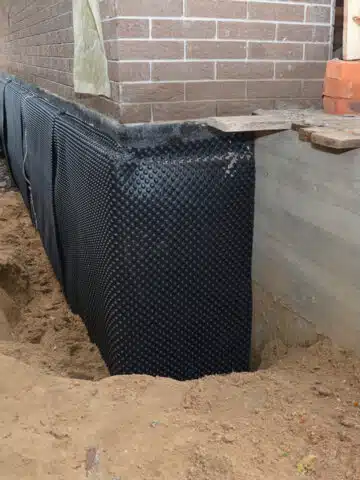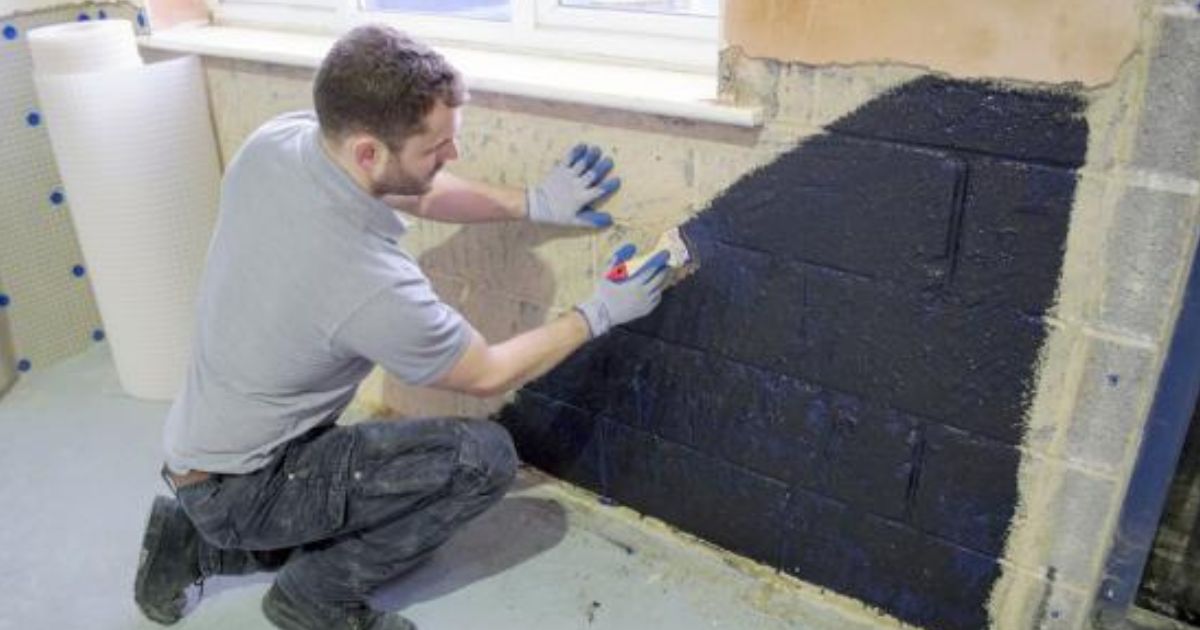Why damp removal newcastle is your primary solution against household mold
Exploring the Numerous Techniques and Solutions for Effective Damp Proofing
Moisture in buildings presents considerable difficulties to both structural integrity and indoor air quality. Various techniques and solutions have actually arised to battle this prevalent concern. From conventional damp-proof membranes to ingenious chemical therapies, each approach supplies unique advantages. Recognizing these choices is crucial for efficient dampness control. Picking the appropriate solution depends on certain building conditions and demands, triggering further expedition right into the most efficient moist proofing methods available.
Comprehending the Causes of Dampness
Moisture can develop from different resources, understanding these reasons is essential for reliable removal. Commonly, dampness stems from 3 primary resources: rising moist, penetrating wet, and condensation. Increasing wet happens when groundwater travels up-wards through permeable materials, such as block or stone, typically because of a lack of an effective obstacle (damp proofing newcastle). Passing through moist is commonly caused by outside elements, consisting of roofing system leaks, malfunctioning rain gutters, or harmed walls, enabling water to penetrate a building. Condensation, on the other hand, results from excess dampness in the air, commonly intensified by inadequate ventilation and temperature distinctions, leading to water beads basing on surface areas. Recognizing these underlying issues is crucial, as each type of wetness needs a customized method for removal. Appropriate assessment helps in determining one of the most effective remedies, eventually safeguarding the structural stability of a structure and enhancing indoor air top quality
Typical Damp-Proof Membranes

Chemical Damp-Proofing Solutions
Chemical damp-proofing solutions offer an innovative method to avoid wetness invasion in buildings. These methods generally involve the application of fluid chemicals that penetrate masonry and form a barrier against climbing moist. Frequently used chemicals consist of silanes, siloxanes, and various other water-repellent agents that respond with surface materials to develop a hydrophobic layer.The application process normally requires drilling holes right into the wall surfaces, infusing the chemical service, and enabling it to heal. This technique is especially helpful for older structures where traditional damp-proof membrane layers might be not practical. Chemical damp-proofing can be less disruptive and more affordable than substantial renovation projects.While efficient, these remedies depend on proper application and environmental problems for peak performance. mould treatment newcastle. Normal maintenance and surveillance are necessary to assure the longevity of the damp-proofing therapy. In general, chemical damp-proofing stands for a flexible alternative for protecting structures versus moisture-related damages
Tooth Cavity Wall Surface Building And Construction Methods
Dental caries wall construction strategies provide numerous advantages, especially in dampness control and power efficiency. By integrating an air void between two layers of masonry, these wall surfaces effectively reduce water ingress while improving insulation. This mix not just protects structures from wetness but likewise adds to lowered power consumption.
Benefits of Dental Caries Walls
When taking into consideration effective damp proofing techniques, the benefits of tooth cavity wall surfaces attract attention plainly. Cavity wall surfaces are composed of 2 different layers, developing an air void that effectively decreases moisture penetration. This design reduces the danger of wetness, as the outer wall surface acts as a barrier versus rainfall and water access. In addition, dental caries walls boost thermal insulation, which adds to energy effectiveness by reducing heat loss. They also offer audio insulation, aiding to create a quieter interior environment. The air void permits for ventilation, which aids in moisture control and lowers the probability of mold and mildew development. These advantages not only boost the general comfort of a building yet also contribute to its long life and structural stability.
Dampness Control Strategies
Reliable dampness control techniques are vital in tooth cavity wall surface building and construction to guarantee long-lasting protection against wetness. One primary technique entails the incorporation of weep openings, which promote water drainage from the tooth cavity, protecting against accumulation. Furthermore, using breathable membranes can assist take care of dampness levels while permitting trapped vapor to leave. Appropriate positioning of insulation is also important, as it needs to not obstruct drainage courses. Furthermore, making certain that the outer leaves of the dental caries wall surface are constructed with waterproof products boosts overall toughness. Normal maintenance checks are important to determine any type of obstructions or damages early, securing the framework's stability. Eventually, a combination of these methods develops a durable protection versus dampness breach in dental caries wall surfaces.
Insulation and Energy Efficiency
Insulation plays an important role in enhancing power performance within dental caries wall surface building and construction. By integrating protecting materials, these walls develop a thermal obstacle that decreases warmth loss and reduces power intake. Reliable insulation not only helps preserve a stable interior temperature level however likewise reduces the risk of dampness, as it prevents condensation within the wall tooth cavity. Numerous strategies, such as making use of rigid foam boards or mineral woollen, can be utilized to achieve ideal insulation efficiency. In addition, appropriate installation is vital to guarantee that voids and spaces are minimized, which can or else jeopardize power effectiveness. Ultimately, a well-insulated dental caries wall adds considerably to total sustainability and reduces cooling and heating costs for home owners.
External Damp Proofing Approaches
External wet proofing methods are crucial for protecting frameworks from wetness seepage. Two effective techniques consist of the application of waterproof membrane layers and the installation of French drains. These remedies assist minimize water accumulation and protect the honesty of buildings.
Waterproof Membrane Layer Application
While numerous techniques exist for avoiding moisture ingress, the application of water-proof membrane layers stays an extremely reliable external moist proofing method. These membrane layers are normally made from products such as polyethylene, rubber, or modified bitumen, supplying a durable obstacle against water penetration. The setup procedure entails applying the membrane to the outside surface areas of walls or foundations, making sure full insurance coverage to stop leakages. Proper attachment and securing at joints are vital to taking full advantage of performance. Waterproof membranes can be used in numerous types, including fluid layers and sheet membranes, permitting versatility based on the certain demands of the framework. This approach not just shields structures from wetness yet additionally boosts their longevity and structural integrity.
French Drain Installation
One effective method for managing groundwater and avoiding moisture accumulation around a building's foundation is the installation of a French drainpipe. This water drainage system includes a trench full of crushed rock and a perforated pipe that redirects surface water far from the foundation. Appropriate setup requires cautious preparation, making sure that the drainpipe slopes far from the framework to assist in optimal water flow. Additionally, the location of the drain is important; it should be placed in areas susceptible to pooling or excess wetness. Routine maintenance, consisting of clearing particles from the gravel and ensuring the pipeline remains unhampered, is crucial for lasting performance. Eventually, a well-installed French drainpipe can considerably reduce the risk of water-related problems in basements and foundations.
Inside Waterproofing Techniques
Inside waterproofing approaches are important for safeguarding a structure's interior from dampness seepage and potential water damages. These approaches typically include the application of specialized materials and strategies designed to produce a dampness barrier within the framework. One common technique is making use of waterproof coatings or sealers on wall surfaces and floors, which prevent wetness from passing through surfaces.Additionally, setting up indoor drainage systems, such as sump pumps, can successfully take care of water accumulation in basements and creep rooms. An additional method involves the usage of vapor barriers, which are mounted to inhibit wetness activity from the ground right into living spaces.Moreover, dealing with any kind of cracks or spaces in wall surfaces or foundations with suitable sealants guarantees a thorough defense against water intrusion. By carrying out these indoor waterproofing strategies, homeowner can considerably lower the threat of mold and mildew development, architectural damages, and various other moisture-related problems. Appropriate implementation of these methods is necessary for long-lasting protection and building integrity.
Regular Upkeep and Examination Practices
Normal upkeep and inspection practices are important for ensuring the long-lasting efficiency of moist proofing services in any building. Routine checks make it possible for property proprietors to recognize early signs of moisture invasion, such as peeling paint, mold and mildew development, and stuffy smells. These indications can signify underlying concerns that call for instant attention.Inspections must be carried out at the very least annually, concentrating on vulnerable locations like cellars, crawl spaces, and exterior wall surfaces. Throughout these analyses, building proprietors ought to take a look at sealants, drainage systems, and ventilation to verify they operate correctly.Additionally, maintaining downspouts and gutters is necessary, as stopped up systems can cause water buildup near the foundation. Applying a regular maintenance routine, along with prompt repair work, can significantly expand the life-span of moist read more proofing actions and protect the structural integrity of the building. Aggressive procedures ultimately add to the general health and wellness of the living setting.
Frequently Asked Questions
The Length Of Time Does Damp Proofing Normally Last?
The duration of wet proofing effectiveness varies, usually lasting between 20 to half a century. Elements such as application quality, environmental conditions, and maintenance methods considerably affect the longevity of the wet proofing therapy.

Can I Damp Proof My Home Myself?
The private pondered the feasibility of do it yourself damp proofing. With correct research and the appropriate materials, it is feasible. Nevertheless, they likewise acknowledged the value of professional advice to guarantee resilient efficiency and protect against future problems.
What Are the Signs of Ineffective Damp Proofing?
Indications of inadequate wet proofing consist of relentless mildewy odors, noticeable mold development, peeling off paint, damp spots on wall surfaces, and timber decay - mould treatment newcastle. House owners ought to attend to these problems promptly to stop further damage and wellness issues
Does Damp Proofing Affect Indoor Air Top Quality?

Just How Much Does Specialist Damp Proofing Price?
Professional moist proofing expenses vary substantially, normally ranging from $1,000 to $5,000 depending on the property's dimension, the extent of the damp concern, and picked methods. Each scenario calls for a tailored assessment for accurate rates. Generally, dampness originates from 3 primary resources: increasing wet, penetrating wet, and condensation. When taking into consideration effective damp proofing methods, the benefits of cavity wall surfaces stand out prominently. Outside wet proofing approaches are important for securing frameworks from wetness seepage. While various methods exist for protecting against dampness ingress, the application of waterproof membranes continues to be a very effective external wet proofing technique. Indications of inefficient damp proofing include consistent mildewy odors, visible mold development, peeling off paint, damp spots on walls, and timber degeneration.